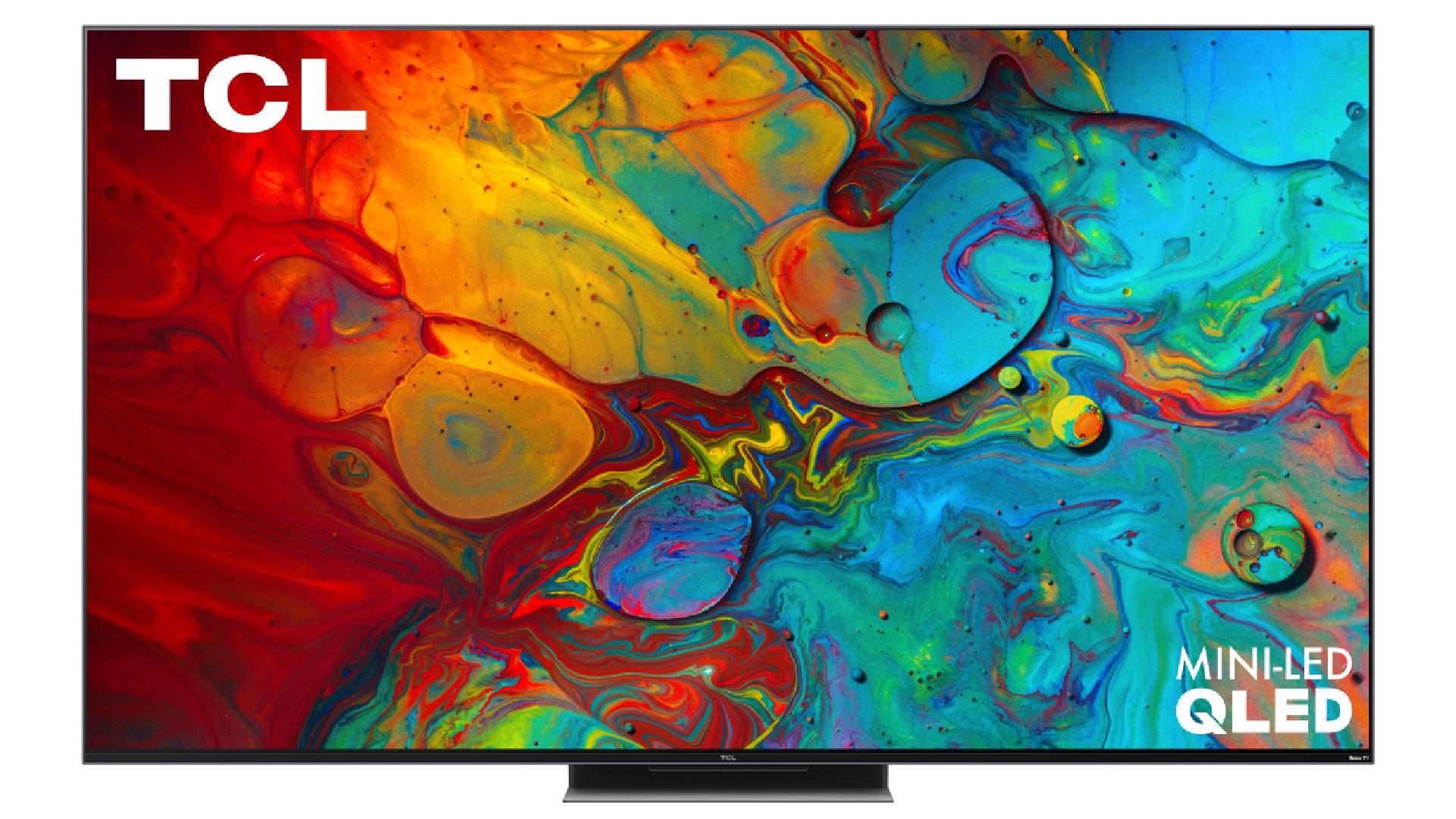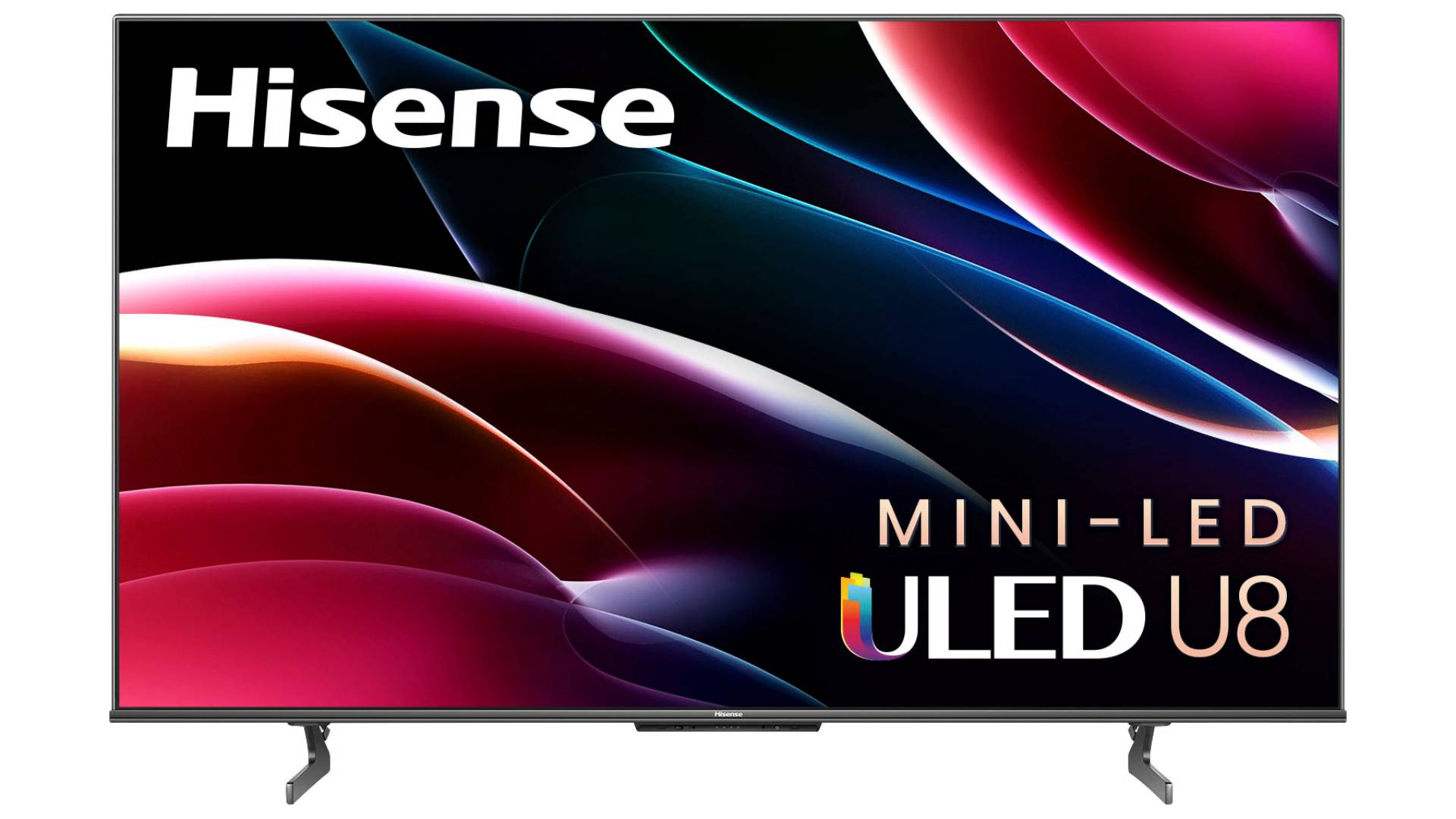TCL 6-Series vs Hisense U8H: which budget mini-LED TV is best?
Battle of the low-cost mini-LED TVs

Sizes: 55, 65, 75, 85-inches
Screen tech: QLED with mini-LED
HDR Support: Dolby Vision, HDR10+, HDR10, HLG
Smart TV: Roku and Google TV options
The TCL 6-Series is the company’s flagship TV, and it makes the most of mini-LED tech to deliver a bright, yet refined picture that stands up to daytime or dim-the-lights viewing. A new design for the series is its most appealing yet, while gaming features include 120Hz, VRR, ALLM, and FreeSync Premium Pro.
For
- Great brightness and contrast
- 120Hz and VRR 144Hz support
- Affordable for a mini-LED TV
Against
- Thin-sounding built-in audio
- Pic adjustments hidden
- No ATSC 3.0 support

Sizes: 55, 65, 75, 85-inches
Screen tech: QLED with mini-LED
HDR Support: Dolby Vision, HDR10+, HDR10, HLG
Smart TV: Google TV
The Hisense U8H is the budget brand’s flagship series and represents an attempt to pack as many features as possible into a competitively priced TV. Its mini-LED backlight delivers high brightness, though its local dimming is a bit less refined than the TCL. It’s also a fine match for next-gen consoles, with 120Hz, FreeSync Premium Pro, VRR and ALLM all present.
For
- Excellent brightness
- Rich color
- Great gaming features
Against
- Some backlight blooming
- Soft upconverted images
- Just average audio
Both the TCL 6-Series and Hisense U8H series are great choices for someone seeking a relatively low-cost big-screen TV that offers excellent brightness, powerful contrast and rich, well-saturated color. Both are also great for gaming. But choosing between them isn't a simple matter.
Budget TV-maker TCL has long been a proponent of Mini-LED backlighting tech, a feature delivering brightness levels that exceed what you’d get with either an OLED or conventional LED-lit TV. The company’s models also feature a quantum dot layer, a tech that brings an enhanced color range and which helps to boost picture brightness.
TCL has grown in stature over the years, with the TCL 6-Series sets featuring prominently in our list of the best 4K TVs. But another budget TV competitor, Hisense, is gaining ground as a high-performance TV brand, with its U8H series model landing on that same list after it was released in 2022.
So which of these TV options is right for you? We’ll compare the two side-by-side on a number of parameters to help you make a final buying decision.
TCL 6-Series vs Hisense U8H: Prices and sizes
Both the TCL and Hisense offerings are budget TVs, and high-value ones at that given their display tech and features. The 6-Series and U8H sets are available in 55-, 65-, and 75-inch screen sizes, with the 6-Series additionally providing an 85-inch option.
TCL 6-Series
- 55-inch 55R655: $699
- 65-inch 65R655: $999
- 75-inch: 75R655: $1,499
- 85-inch 85R655: $1,999
Hisense U8H
- 55-inch 55U8H: $1,149
- 65-inch 65U8H: $1,399
- 75-inch 75U8H: $1,499
The prices listed above for the TCL and Hisense models were manufacturer’s suggested list when the TVs first shipped. Hisense’s sets have since dropped in price to $649 (55-inch), $899 (65-inch), and $1,299 (75-inch). TCL’s 6-Series prices have mostly held steady, though the company’s offerings typically see discounts during major sales events like Amazon Prime Day and Black Friday.
Having an 85-inch model in the lineup, especially one priced at $1,999, gives the 6-Series an extra flex, since users can expect most of the same tech and features found in the rest of the series to carry over to that extra-large screen size.
TCL 6-Series vs Hisense U8H: Features
As far as features are concerned, the 6-Series and U8H TVs are pretty evenly matched. Both are QLED displays with a mini-LED backlight and local dimming for improved contrast. Beyond that, both support Dolby Vision, HDR10+, and HLG high dynamic range formats, and both have dual HDMI 2.1 inputs with 120Hz, VRR, and ALLM for gaming. The 6-Series models offer VRR with up to 144Hz support (85-inch excepted, which has 120Hz VRR), however, making them a slightly more compelling option for gaming. Both TV lineups also have FreeSync Premium Pro.
One key difference between the two lines when it comes to features is the inclusion on the Hisense models of an ATSC 3.0 tuner. This is compatible with next-gen digital TV broadcasts in the US supporting 4K HDR video and Dolby Atmos audio, whereas the built-in tuner on TCL’s sets is compatible only with the older, high-definition ATSC 1.0 standard.
The 6-Series TV we tested features the Roku smart TV interface, while the U8H series uses Google TV (an option that TCL also makes available for the 6-Series). Both have their advantages and disadvantages, but the Roku interface is generally less cluttered and easier to navigate, while Google TV is packed with more ads.
TCL 6-Series vs Hisense U8H: Design
Both the 6-Series and U8H TVs have extremely thin bezels that give the image an “all-picture” look. The main design difference between them is that the 6-Series sets have a center-mounted aluminum-plate stand, while the U8H TVs have feet that attach at either side of the screen. (The 85-inch 6-Series model also has side-mounted feet since a center stand would create safety issues at that screen size.)
The U8H’s feet can also be attached at two different positions: the first closer to center and the second further out to make space for a soundbar. Another soundbar-accommodating feature is the ability to mount the TV at a variable height – something TCL 6-Series sets can also do.
TCL 6-Series vs Hisense U8H: Picture quality
The 6-Series and U8H TVs go about head-to-head when it comes to picture performance, offering up high brightness, powerful contrast, and rich color reproduction. A 65-inch Hisense model we tested delivered higher peak light output than a same-size TCL 6-Series set, though the overall brightness differences were minor.
Like many other TVs that depend on LCD panel technology, both the 6-Series and U8H models have off-axis performance limitations. That basically means images lose contrast and color saturation when viewed from far-off-center seats. This is an area where the best OLED TVs have a competitive advantage, though OLED models are generally priced much higher than both Hisense and TCL mini-LED TVs.
One area where the 6-Series showed a performance advantage over the U8H was in local dimming. Both sets displayed a degree of backlight blooming – something mainly visible in black letterbox bars in movies, or on other areas of the screen where a bright object was set against a black background. The TCL proved to be slightly better at handling this, however. Also, its upscaling of standard high-definition pictures was slightly cleaner.
TCL 6-Series vs Hisense U8H: Audio performance
Both the 6-Series and U8H series TVs we tested had average audio performance, with mostly thin-sounding presets and limited bass (despite the U8H having a built-in “subwoofer”). Dialogue clarity on both was also very good. But either model would benefit from the addition of one of the best soundbars – an option I’d strongly recommend.
The 6-Series and U8H series TVs are Dolby Atmos-compatible. And while this generally didn’t have much impact when watching movies and shows with Atmos soundtracks, the 6-Series’ audio had a stronger spatial quality, with sound widening out from the screen in a more believable manner than with the Hisense U8H.
TCL 6-Series vs Hisense U8H: Conclusion
Both the TCL 6-Series and Hisense U8H models we tested performed very well, and we were impressed with the features they offer for the money. These are great big-screen TVs, and both will satisfy movie fans and gamers alike.
Choosing between the two will be tough, but here are some points to consider. The 6-Series has an 85-inch screen option while the Hisense U8H lineup tops out at 75 inches, so if a mega-large screen is in your immediate future, TCL has you covered. Both are also great values, though Hisense’s models at this point are selling for less on average than TCL’s. But that’s a situation that could change at a moment’s notice.
Features for the two lines are mostly similar, though TCL offers a Roku TV option while Hisense is saddled with the somewhat more annoying Google TV smart TV interface. Hisense also has a built-in next-gen ATSC 3.0 tuner, while the tuner in 6-Series sets only supports the older, HD-only ATSC 1.0 broadcast TV standard. The design of both is very good, though TCL’s 6-Series has an attractiveness edge with its updated center-mounted stand.
Picture performance is the most important thing when it comes to a TV, and here the TCL and Hisense are very close. The U8H series has a bit of an edge when it comes to peak brightness (though both models are very bright) while TCL has better local dimming precision, offering up slightly more solid and uniform-looking blacks.
In the end, most viewers are likely to be very satisfied with either of these budget TV options. Both provide many of the same great qualities found in the best OLED TVs, while approaching the peak light output and local dimming prowess of much pricier mini-LED models like the Samsung QN95B. Consider our comparison, and then check out the prices for TCL’s 6-Series and Hisense’s U8H TVs. Both come recommended, and both are great values.
Get daily insight, inspiration and deals in your inbox
Sign up for breaking news, reviews, opinion, top tech deals, and more.

Al Griffin has been writing about and reviewing A/V tech since the days LaserDiscs roamed the earth, and was previously the editor of Sound & Vision magazine.
When not reviewing the latest and greatest gear or watching movies at home, he can usually be found out and about on a bike.